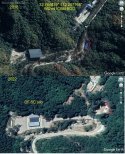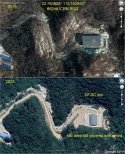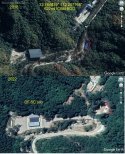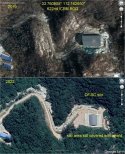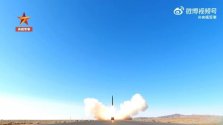You are using an out of date browser. It may not display this or other websites correctly.
You should upgrade or use an alternative browser.
You should upgrade or use an alternative browser.
China Ballistic Missiles and Nuclear Arms Thread
- Thread starter peace_lover
- Start date
- Status
- Not open for further replies.
Never thought you would ever come here, Ben.others do too, so I'll quote my own tweets
View attachment 94284
View attachment 94285
other DF-5C silos currently under construction:
662 BGD:
33.786240° 112.023946° / 33.809983° 111.942846°
634 BGD:
26.312843° 109.950485° / 26.268574° 109.925295°
26.229300° 109.902605° / 26.187493° 109.893770°
Just FYI, rumor in Chinese forum claimed a much bigger number of DF-5C than 6, though I didn't find any clues.
escobar
Brigadier
Video of DF-17 launch because of Pelosi? lol
He's actually been here for years lol. @rambo54 just waiting on your response to my private messageNever thought you would ever come here, Ben.
Just FYI, rumor in Chinese forum claimed a much bigger number of DF-5C than 6, though I didn't find any clues.
What's your figure on the number of DF-5Cs? Someone else put it at 18 new silos discovered.
I think at least 12 DF-5Cs silos rn since every old liquid ICBM brigade operates "multiples of 6" silos.He's actually been here for years lol. @rambo54 just waiting on your response to my private message
What's your figure on the number of DF-5Cs? Someone else put it at 18 new silos discovered.
Someone suggests 30 newly built, even up to 60, for DF-5Cs. But I don't really think highly of DF-5C, given we don't know whether its fuel can be easily stored, the distance between Hunan and New York, and most importantly the efficiency ratio.
As for solid ICBM, it requires a lower number of personnel to operate & maintain. The newly built ZK-1A only costs $15m each, T700 motor, HTPB propellant, 4.5 tonnes throweight from Yumen to New York. It won't cost much higher to use T800 and NEPE propellant in a smaller military variant. They also made a brief documentary on ZK-1A, the launch system looks perfectly suitable for unmanned LF.
we actually know that information. LM-2 is based on DF-5 (the original) and uses UMDH+N2O4. Those are stable indefinitely in standard stainless steel containers at room temperature.But I don't really think highly of DF-5C, given we don't know whether its fuel can be easily stored, the distance between Hunan and New York, and most importantly the efficiency ratio.
N2O4/UDMH is indeed stable but you still need layers of membranes separating the fuel and engine. I have no doubt that China is capable of making these materials now but it doesn't seem to be the case for DF-5A/B and we are still waiting to see whether 5C is deployed with such membranes.we actually know that information. LM-2 is based on DF-5 (the original) and uses UMDH+N2O4. Those are stable indefinitely in standard stainless steel containers at room temperature.
which only required 60 seconds from receiving order to launch.N2O4/UDMH is indeed stable but you still need layers of membranes separating the fuel and engine. I have no doubt that China is capable of making these materials now but it doesn't seem to be the case for DF-5A/B and we are still waiting to see whether 5C is deployed with such membranes.
I am not sure what you mean by "membrane separating the fuel and engine". The fuel and engine are separated by valves. As a hypergolic, UMDH+N2O4 does not require an igniter to start nor does it require any mechanism besides shutting the fuel valve to stop. From my understanding, membrane seal assembly is a solid rocket concept, not liquid rocket.The use of storable propellants enabled the Titan II to be launched within 60 seconds directly from within its silo.
Yes but N2O4/UDMH is corrosive and toxic, meaning it will erode the valve throughout years and makes it unsafe to launch. U.S. didn't rely on liquid ICBM as much as Soviet did during cold war, and Soviet use membrane-valves to ensure missile safety on ICBMs, SLBMs such as SS-23 and SS-18/SS-30 series where US only deploy them in fixed silos.which only required 60 seconds from receiving order to launch.
I am not sure what you mean by "membrane separating the fuel and engine". The fuel and engine are separated by valves. As a hypergolic, UMDH+N2O4 does not require an igniter to start nor does it require any mechanism besides shutting the fuel valve to stop. From my understanding, membrane seal assembly is a solid rocket concept, not liquid rocket.
During the storage of the missile the engines were isolated from the propellant components by membrane-valves that provided their safety during extended times of being in a fueled condition.
As of China, I think it also applies on safety concerns. Yes, you can fuel the tank during a crisis and launch within minutes but it is extremely expensive to refuel-empty-refuel over and over again. That's probably why each PLARF brigade only operates 6 silos.
Also these DF-5 silos need to distance themselves from each other, make it more expensive to operate. as communication line cost is one of the major costs in building silos clusters.
- Status
- Not open for further replies.

